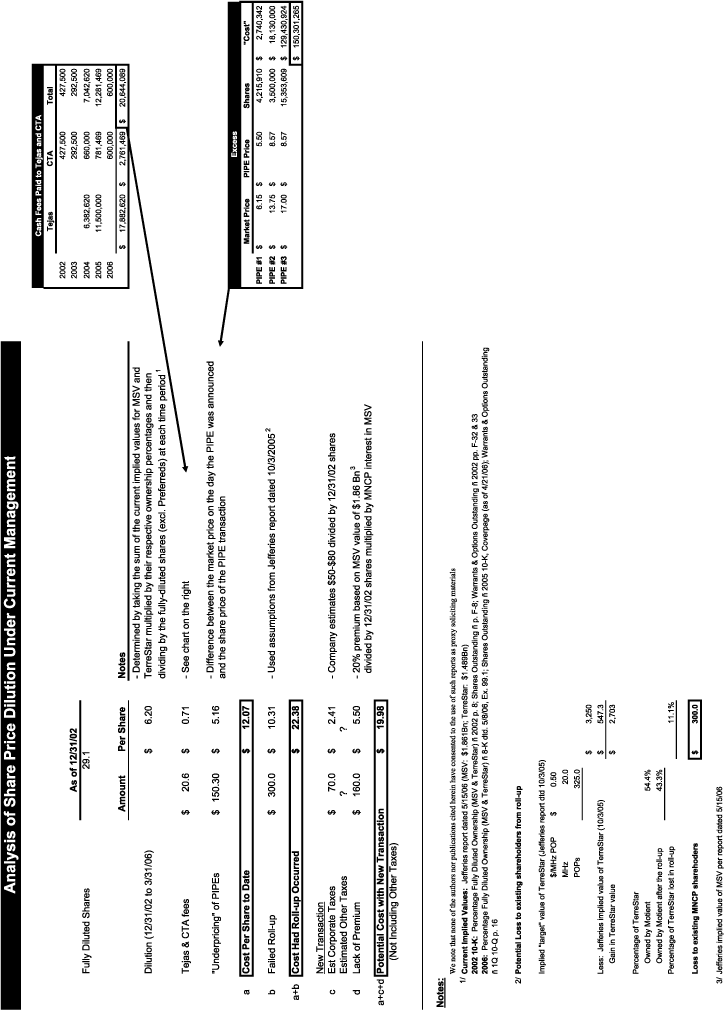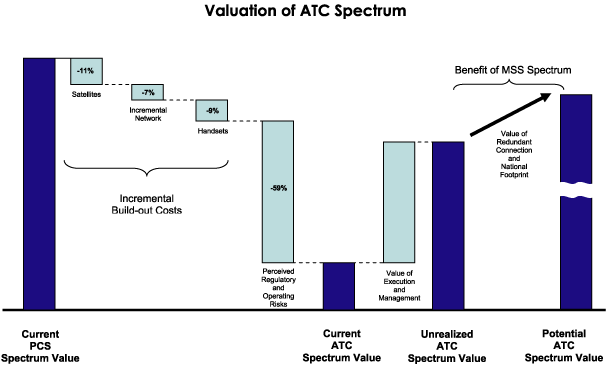| | • | | The company filed amendments to its quarterly reports on Form 10-Q for the periods ended June 30, 2005 (the “Second Quarter Form 10-Q/A”) and September 30, 2005 (the “Third Quarter Form 10-Q/A”) on March 30, 2006. According to the amended second quarter filing, the company again failed to properly reflect certain accounting treatments of equity interests, this time failing to properly record the value of certain warrants issued in February 2005. The restatement reflects an increase in the Company’s net loss from $22.9 million to $25.8 million for the three month period ended June 30, 2005, and an increased net loss for the six month period ended June 30, 2005 from $51.4 million as previously reported to $56.9 million as restated. In the amended Third Quarter Form 10-Q/A, the Company increased its net loss from $18.5 million to $20.1 million for the three month period ended September 30, 2005, and increased its net loss from $69.88 million to $77.0 million for the nine month period ended September 30, 2005. |
| |
| | • | | Motient failed to timely file its Form 10-K reports for fiscal 2005, 2004, 2003 and 2002; and its Form 10-Q reports for the first quarter of fiscal 2006, the second quarter of fiscal 2005, the first quarter of fiscal 2004, the first, second and third quarters of fiscal 2003 and the second and third quarters of fiscal 2002. |
Motient’s troubles with financial reporting are not isolated incidents. The pattern of restatements and acknowledgements of internal control weaknesses is a clear indication that Motient’s management of financial reporting is a significant issue that Motient has been unable to remedy to date.
Stockholder Dilution
As the below chart indicates, Motient stockholders have been and continue to be diluted by the actions of Motient’s management and current board.
Since emerging from bankruptcy, Motient’s fully-diluted share count has more than doubled, from approximately 29.1 million to 69.7 million shares. We believe this increase in share count has decreased the value of Motient shares by approximately$6.20based on the current implied values of TerreStar and MSV. The advisory and consulting fees paid by Motient to Tejas and CTA over the years have cost Motient shareholders approximately $20.6 million, or$0.71per share. By Motient pricing its PIPE transactions in 2004 well under the then-current market price, we believe Motient shareholders were diluted by approximately $150.3 million, or$5.16per share. Finally, if the recently announced sale of Motient’s ownership in MSV to SkyTerra goes forward, Highland estimates that Motient shareholders will be diluted by an additional $230.0 million, or$7.91per share, which does not include the taxes that each Motient shareholder will have to pay upon receipt of SkyTerra shares.
Thus, long-term Motient shareholders will have beendiluted by at least $19.98 per sharein value.
Help us put a stop to the bleeding by electing our slate of directors who will work diligently to increase stockholder value.
-11-
“Current ATC Spectrum Value,” subtract the incremental build-out costs. The difference between that result and the current values of ATC spectrum is assumed to be the implied risk factor specific to MSS/ATC, which will diminish over time if management successfully executes — bringing values toward what is labeled “Unrealized ATC Spectrum Value”. To reach the “Potential ATC Spectrum Value” as illustrated below it is appropriate to add a premium for both (1) a national footprint at one frequency, and (2) the redundancy offered by the satellite.
Note: for illustrative purposes only
A risk to current spectrum prices is the pending availability of additional supply. On April 12, 2006, the FCC announced an auction for 90 MHz of AWS (Advanced Wireless System) spectrum at 1710 MHz to 1755 MHz and 2110 MHz to 2155 MHz for the summer of this year.25 The prices paid for spectrum by those participating in this auction will establish a benchmark for the value of L- and S-band MSS/ATC spectrum. While 90 MHz is a substantial amount of spectrum, if there is significant bidding activity, it is conceivable that not all bidders will end up with the amount of spectrum they need, especially new entrants. In this instance the “losing” bidders will likely look to alternative sources of “beachfront spectrum,” such as MSS/ATC.
×Strategic QuestionsØ
In order to fully exploit the embedded options in its spectrum assets, Motient must first identify and then carefully analyze and weigh its various alternatives. It should be noted that in 2005, MSV retained Evercore Partners to provide a strategic analysis. It is important that during this review process, management preserves its strategic options by continuing to build out and meet the prescribed FCC milestones (seeAppendix 2). Accordingly, strategic decisions should be
-19-

